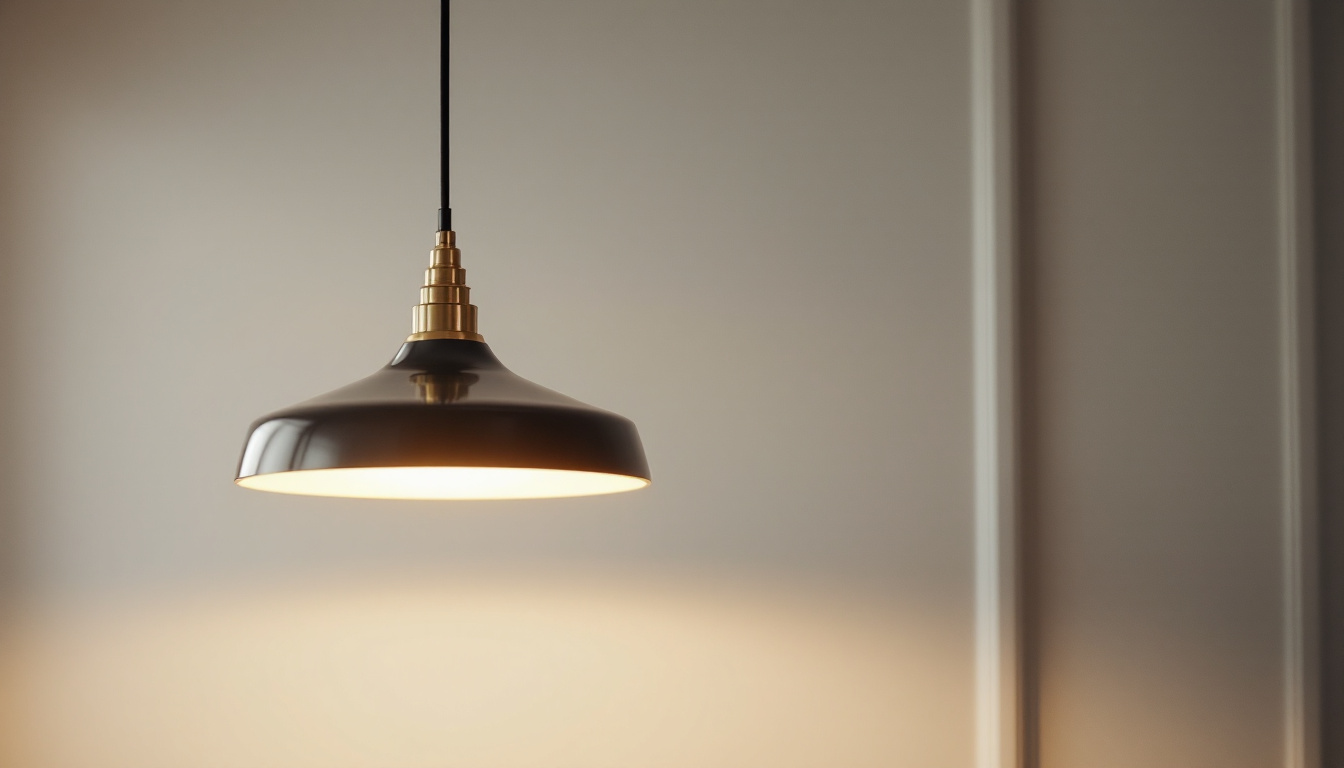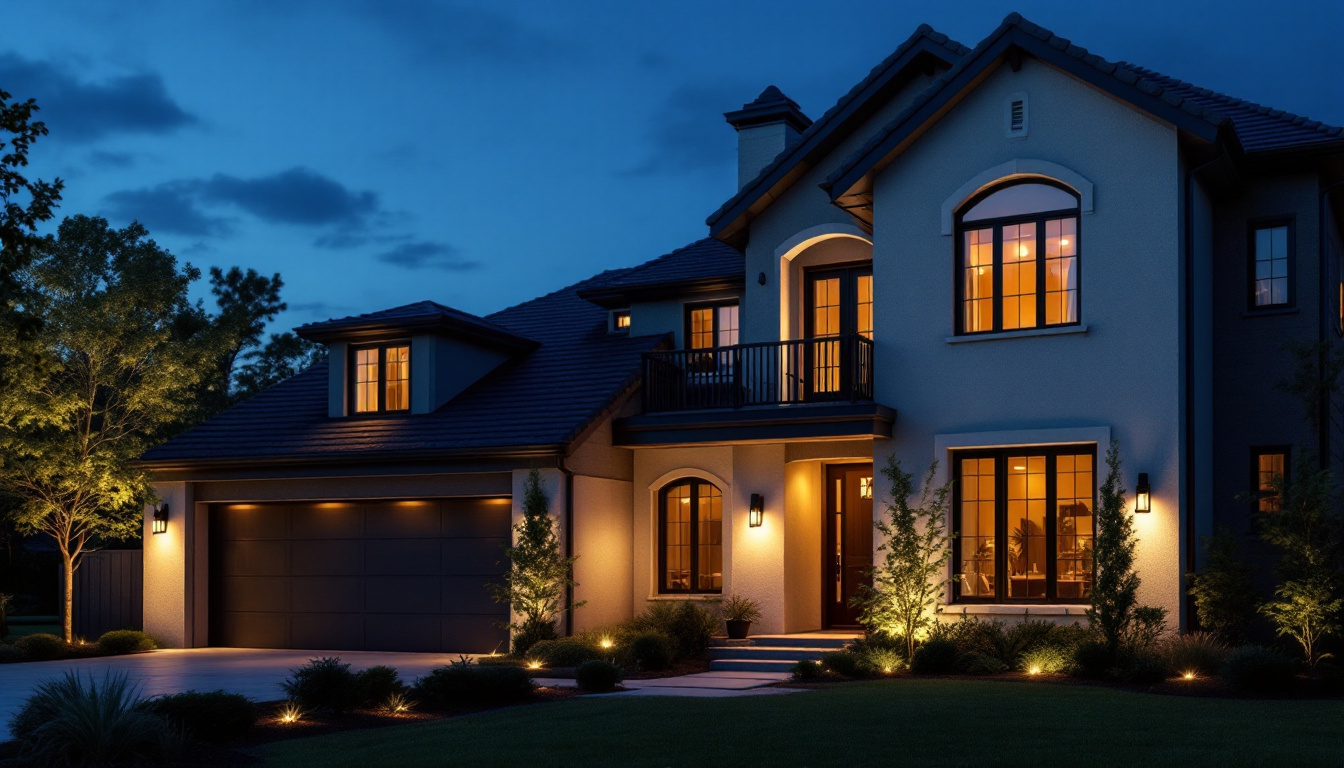
In the realm of warehouse management, energy efficiency is a critical concern. As lighting systems evolve, the integration of fans into warehouse lighting setups has emerged as a significant factor in optimizing energy consumption. This article explores the synergy between fans and energy-efficient lighting, providing insights that lighting contractors can leverage to enhance their projects.
Energy efficiency in warehouses is not merely a trend; it is a necessity driven by rising operational costs and environmental considerations. With warehouses often operating around the clock, the need for effective lighting solutions that minimize energy consumption is paramount. As businesses strive to remain competitive, the implementation of energy-efficient practices has become a critical component of operational strategy, allowing companies to allocate resources more effectively and invest in growth opportunities.
Implementing energy-efficient lighting systems can lead to substantial cost savings over time. These savings not only benefit the bottom line but also contribute to sustainability efforts, making warehouses more environmentally friendly. Additionally, energy-efficient practices can enhance a company’s reputation, appealing to eco-conscious consumers and stakeholders who prioritize sustainability in their purchasing decisions. By adopting energy-efficient measures, warehouses can position themselves as leaders in corporate responsibility, fostering loyalty and trust among customers and partners alike.
Lighting typically accounts for a significant portion of a warehouse’s energy usage. Traditional lighting solutions, such as incandescent and fluorescent bulbs, are often inefficient, consuming more power and generating excess heat. This heat can lead to increased cooling costs, further exacerbating energy consumption. Furthermore, the lifespan of these traditional bulbs is considerably shorter, resulting in more frequent replacements and additional labor costs associated with maintenance and disposal.
In contrast, energy-efficient lighting options, such as LED fixtures, provide brighter illumination while using significantly less power. By reducing the overall wattage required for lighting, warehouses can achieve lower energy bills and a reduced carbon footprint. Moreover, LED technology has advanced to offer customizable lighting solutions that can be adjusted based on the specific needs of different areas within the warehouse, such as high-traffic zones or storage areas. This adaptability not only maximizes efficiency but also enhances safety by ensuring optimal visibility where it is most needed.
Integrating fans into warehouse lighting systems can enhance energy efficiency in several ways. Fans help circulate air, reducing the need for cooling systems to work as hard, which can lead to additional energy savings. Moreover, the combination of fans and LED lighting can create a more comfortable working environment. A well-ventilated space not only improves employee morale but can also lead to increased productivity, as workers are less likely to experience fatigue in a comfortable climate.
When fans are strategically placed to complement lighting fixtures, they can help distribute light more evenly throughout the space. This not only improves visibility but also reduces the number of fixtures required, further lowering energy consumption. Additionally, the synergy between fans and lighting can enhance the overall aesthetic of the warehouse, creating a modern and efficient workspace that reflects the company’s commitment to innovation and sustainability. As technology continues to evolve, integrating smart controls that adjust both lighting and airflow based on occupancy and time of day can further optimize energy use, paving the way for a more intelligent and responsive warehouse environment.
Selecting the appropriate fans for warehouse environments is crucial for maximizing energy efficiency. Various factors must be considered, including the layout of the space, the type of lighting used, and the specific needs of the operations conducted within the warehouse.
Different types of fans serve various purposes in warehouse settings. ceiling fans, for instance, are effective in large open spaces, helping to circulate air and maintain a consistent temperature. High-velocity fans can provide targeted airflow in specific areas, enhancing comfort for workers and improving the efficiency of heating and cooling systems.
Another option is industrial exhaust fans, which help remove hot air and humidity from the warehouse. By integrating these fans with energy-efficient lighting, warehouses can create a more balanced environment, reducing reliance on air conditioning systems.
The placement and configuration of fans are vital for achieving optimal energy efficiency. Fans should be positioned to maximize airflow without creating unnecessary drafts. Strategic placement can also enhance the effectiveness of lighting, ensuring that light is evenly distributed throughout the space.
In larger warehouses, it may be beneficial to install multiple fans to create a more uniform airflow pattern. This can help prevent hot spots and ensure that all areas of the warehouse are adequately lit and comfortable for workers.
The integration of fans with energy-efficient lighting systems requires careful planning and execution. Lighting contractors must consider the compatibility of fans and lighting fixtures, as well as the overall design of the warehouse.
When selecting fans to pair with lighting systems, it is essential to ensure compatibility in terms of electrical requirements and operational capabilities. Some lighting fixtures may generate heat that can affect fan performance, while others may require specific mounting configurations.
Additionally, the control systems for both fans and lighting should be integrated to allow for seamless operation. This can include using smart technology that adjusts both systems based on occupancy or ambient light levels, further enhancing energy efficiency.
The design of the warehouse plays a significant role in how effectively fans and lighting can work together. Factors such as ceiling height, layout, and the presence of obstructions can influence airflow and light distribution.
Lighting contractors should conduct a thorough assessment of the warehouse space before implementing fans and lighting solutions. This assessment can help identify potential challenges and opportunities for improvement, ensuring that the final setup maximizes energy efficiency and performance.
Examining successful case studies can provide valuable insights into the benefits of integrating fans with energy-efficient lighting systems in warehouse settings. These examples illustrate the positive impact on energy consumption, operational efficiency, and worker comfort.
A large distribution center implemented a combination of LED lighting and high-velocity fans to enhance energy efficiency. By strategically placing fans throughout the facility, they were able to reduce the cooling load significantly. The result was a 30% decrease in energy costs, along with improved employee comfort and productivity.
The integration of smart controls allowed the lighting and fan systems to work in tandem, adjusting based on occupancy and natural light levels. This dynamic approach not only optimized energy usage but also created a more pleasant working environment.
In another instance, a manufacturing warehouse faced challenges with heat buildup due to machinery and inadequate ventilation. By installing ceiling fans alongside energy-efficient LED lighting, the facility was able to improve air circulation and reduce the reliance on air conditioning.
This integration led to a 25% reduction in energy consumption, while also enhancing the overall working conditions for employees. The combination of improved lighting and airflow resulted in fewer complaints about heat stress, contributing to higher morale and productivity.
For lighting contractors looking to implement fans in warehouse lighting systems, several best practices can help ensure successful outcomes. These practices encompass everything from initial assessments to ongoing maintenance.
Before recommending fan and lighting solutions, contractors should conduct comprehensive assessments of the warehouse environment. This includes evaluating the layout, existing lighting systems, and airflow patterns. Understanding these factors can guide the selection of appropriate fans and lighting fixtures.
Additionally, engaging with warehouse management to understand operational needs and employee feedback can provide valuable insights into how to optimize the environment for efficiency and comfort.
When presenting proposals to clients, contractors should emphasize the energy efficiency benefits of integrating fans with lighting systems. Providing detailed calculations and projections can help clients understand the potential cost savings and return on investment.
Highlighting case studies and examples of successful implementations can also reinforce the value of these solutions, making it easier for clients to see the benefits of investing in energy-efficient technologies.
The future of warehouse lighting and ventilation is poised for innovation, driven by advancements in technology and a growing emphasis on sustainability. As energy efficiency continues to be a priority, the integration of fans with lighting systems will likely become more prevalent.
Emerging technologies, such as IoT (Internet of Things) and smart sensors, are set to revolutionize how warehouses manage lighting and ventilation. These technologies enable real-time monitoring and adjustments based on occupancy, temperature, and ambient light levels, further enhancing energy efficiency.
As these technologies become more accessible, lighting contractors will have the opportunity to offer cutting-edge solutions that not only meet current demands but also anticipate future needs.
With an increasing focus on sustainability, warehouses are expected to adopt more environmentally friendly practices. The integration of energy-efficient lighting and ventilation systems aligns with this commitment, helping to reduce carbon footprints and promote responsible resource usage.
Lighting contractors play a crucial role in this transition, guiding clients toward solutions that not only enhance operational efficiency but also contribute to a more sustainable future.
In conclusion, the integration of fans with energy-efficient lighting systems in warehouses is a must-know for lighting contractors. By understanding the importance of energy efficiency, selecting the right fans, and implementing best practices, contractors can significantly enhance warehouse operations.
As the industry moves toward more sustainable practices, the synergy between fans and lighting will play a pivotal role in shaping the future of warehouse environments. Embracing these innovations will not only lead to cost savings but also create more comfortable and efficient spaces for workers.
Ready to elevate your warehouse lighting solutions with the perfect synergy of fans and energy-efficient lighting? Look no further than LumenWholesale, where we provide contractors with the highest quality, spec-grade lighting products at unbeatable wholesale prices. Say goodbye to inflated markups and hello to superior lighting that meets the highest industry standards. With our hassle-free bulk buying and free shipping, you can trust that you’re getting premium lighting at the best value — every time. Don’t compromise on quality or cost. Explore our selection at LumenWholesale and discover the ideal lighting solutions for your next project.

Discover essential tips and insights on selecting the right can light sizes for your projects.

Discover the essential guide to Mfg-Pendant Mount lighting solutions.

Discover the fascinating history of the light bulb’s invention and gain valuable insights tailored for lighting contractors.

Discover how strategic house exterior lighting can transform your installation projects, enhancing both aesthetics and functionality.